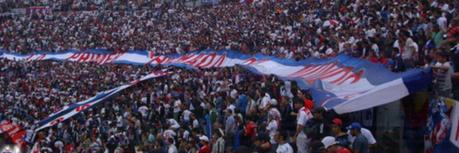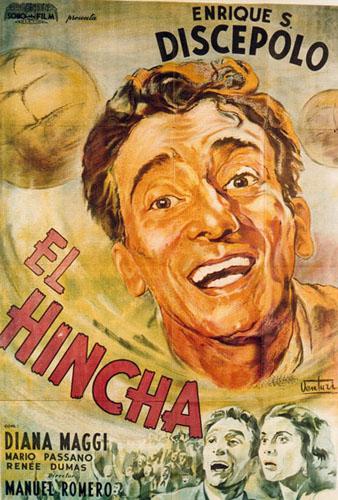 Uruguay has always been considered the most progressive country in all of Latin America. From the time that José Artigas led his troops into battle at Las Piedras, little did they know the impact that they would have in another “field”.
Uruguay has always been considered the most progressive country in all of Latin America. From the time that José Artigas led his troops into battle at Las Piedras, little did they know the impact that they would have in another “field”.
As far as football is concerned, they were also at the vanguard of establishing the game from a tactical as well as from a social perspective.
The tradition continues this year the South American nation is celebrating their bicentennial and the authorities at the Uruguayan FA (AUF) have decided to continue cherishing their past by looking to name a tournament to the one group of people that have been there through thick and thin- the fans.
The planned tribute is going to be personified on one of its most celebrated characters.
At that time the discipline of football was dominated in Uruguay by the English ex-pats that inhabited the region. Teams like Albion Football Club as well as the Central Uruguay Railway Cricket Club were the top exponents of the game at the time. They were all of English influence.
The inception of Nacional was a revolutionary concept. The game in that country was more of a foreign game and his was the primary reason for the Club Nacional de Football to come into existence in 1901. Many individuals believed that the sport needed a Uruguayan identity. At that time the sport was played by the elite (aka foreigners) that looked at the inclusion of natives with disdain.
So much was their intent to establish this, their uniform colors would be the same colors used on Artigas’ flag. Part of the teams’ constitution stated that the uniform would always have to display those three colors.
It would not take long for this club to really start taking off. In their first ful season they would end up in second place and he following season they would get over the hump. From that time on, Nacional would be one of the more successful side and even begin to challenge (CURCC), who had their headquarters in the outskirts of Montevideo- Villa Peñarol to be exact.
THE FIRST HINCHA
In Spanish, “hincha” is a colloquial synonym for fan that was coined at the beginning of the 20th century in Uruguay. This term emerged from Club Nacional de Football, one of the two big teams in the entrepôt. Originally the term “hinchar” meant “to inflate” in the River Plate “lunfardo” of the time. The equipment manager had the dubious nickname of “El Hincha”(the inflator). On top of maintaining the equipment, his job was to “hinchar” the balls.
“What would be of the club without the fans? An empty bag. The fans are what give the colors soul. They are the ones that aren’t seen. That give without expecting anything in return. That’s what the fans are. That’s what I am.”
-El Ñato in the 1951 movie “El Hincha”
Nacional’s “hincha” was a burly man with an noticeably husky voice. The love that Prudencio Reyes for his craft was only surpassed by his devotion for beloved Bolso. Back then to put air in a ball was a science. It’s not like the Jabulani or the TorFabrik that we saw just a year ago make the rounds on the world football circuit.
No, these balls were the heavy leather ones with an even heavier bladder. Those balls that if they ever got wet or were played with on a cold winter’s day would be like kicking a brick. Well, inflating those balls was a mission… especially with the rudimentary equipment of the time.
With a pump you say? Yeah. Whenever there was one available.
Reyes worked as a leather worker in Montevideo as the cattle industry. Cattle and livestock was the king. These industries led to an economically prosperous time albeit the political climate was a very heated one to say the least under José Batlle y Ordoñez.
Despite all this good vibe going on, the political scene was a violent one to say the least during that period in Uruguayan history.
Reyes’fervor for Nacional was evident by friend and foe alike. Such was his display for his team during their early successes that people would ask club officials and players alike who this brawny man was and they would always answer with the same phrase.
“He is the hincha.”
“Wow, look at how the hincha screams.”
What began as a profession became a monicker that would be given to fans that would stand out due to the vociferous nature of their support.

From that point on, more “hinchas” would surface. The term would gather steam and would go across the River Plate where it took a life of its own and become the “lunfardic” label that most South American fans would be labeled with.
Prudencio would be around during the good times as well as one of the darkest times the club faced. He was there during the amateur titles that saw Nacional emerge as the top club in all of the River Plate. He was also there when club idol Abdón Porte would take his own life away after being removed from the starting lineup.
One of Nacional’s supporters groups is called “La Primera Hinchada Del Mundo” (The World’s First Supporters Group) in honor of the club’s exuberant equipment manager.
Little is known of Nacional’s equipment manager outside of that anecdote. All we can expect is that we start learning more about him. The beginning of the upcoming tournament will have several journalists looking into archives as many will look to delve more into the life of a personality that changed the way we live the game and seeing his love for the game be a reason to tribute him over a century later.
“Why do you work if you can’t go to the pitch to tear your lungs out supporting an ideal? Or is that not worth something? -El Ñato in the 1951 movie El Hincha
There would be movies done inspired by Reyes’ over four decades later. One of the prime examples would be that of the 1951 Argentine cult classic “El Hincha”. The main character, El Ñato (Pudgy Nose) played by Argentine actor/singer Enrique Discepolo puts his love for the colors of his team over the love of his life. While this character does everything to save his team from relegation, he begins to find out what the business side of the game was all about as he looked to use the talents of his sister’s girlfriend to keep his team afloat.
For Discepolo, that would be his final movie as he would die of heart complications just eight months after the movie’s release.
Uruguayan football have become nostalgic as their tributes are a reflection of the past, but also a way to ponder the future. The present is not a good one for the league although there are some bright spots. The fans, albeit battered and hurt by the way their clubs have run their passions into the ground have finally received the recognition (the ones the good fans) deserved. Better late than never.
